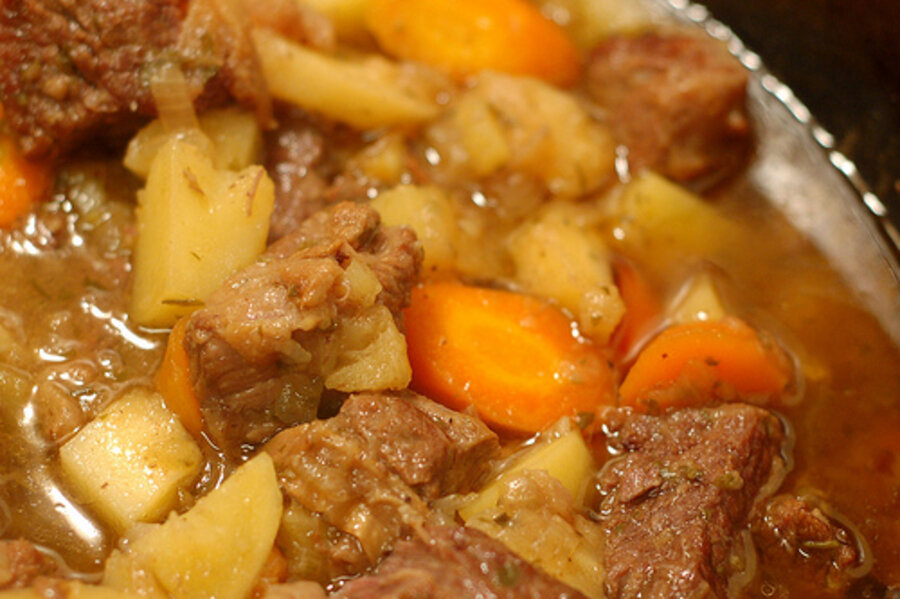A Passover meal: short ribs with root vegetables and spring herbs
Loading...
As Diane Keaton once said, "Soon the Passover holidays are coming and you'll be wanting to wear your matzos." (That's a little shout-out to the movie Sleeper, one of Woody Allen's best and well-worth watching despite the director’s tabloid buzz.)
But silly quotes aside, what will you be cooking for this year's Seder? There are a few good ideas on my holiday foods page. But I figured that something new was in order this year.
I found myself thinking of a tasty-sounding recipe for short ribs that I'd clipped from a Martha Stewart Living magazine a while back. The irony of this recipe's provenance is not lost on me but even though Martha Stewart may possibly be America's most famous WASP, I've found several excellent Jewish recipes from her magazine over the years.
And this yummy take on the traditional short ribs recipe is no exception. I love that it combines root vegetables (carrots, parsnips, and Yukon Gold potatoes) and fresh herbs (Italian parsley, rosemary and thyme), all of which are fresh, plentiful, delicious and affordable at this time of year. I'm also a sucker for the combination of apple cider, garlic, onions, and brown sugar that the ribs get stewed in. I hope you like it, too.
Happy Pesach to you and yours!
Beef Short Ribs With Root Vegetables & Spring Herbs
Serves 4
3 lbs. boneless beef short ribs, rimmed
1/8 cup of olive oil
2 medium-sized onions, halved then cut into 1/4-inch slices
3 garlic cloves, finely chopped
1/6 cup packed dark-brown sugar
1-1/4 cups apple cider
3/4 cup chicken stock
1 tablespoon fresh thyme leaves
1/2 tablespoon finely chopped fresh rosemary
1/4 cup fresh Italian parsley, finely chopped plus a little more for garnish
1/2 lb. parsnips, peeled and cut into 1/2-inch slices
3/4 lb. carrots, peeled and cut on the diagonal into 1-inch pieces
1 pound Yukon Gold potatoes, peeled and cut into 1-inch pieces
Sea salt and freshly ground black pepper
1. Preheat the oven to 325 degrees F. Season the beef with salt and pepper. Heat the oil in a Dutch oven over high heat. Brown the beef in batches, flipping over once – about 2-3 minutes per side. Remove the ribs to a bowl and turn the heat down to medium.
2. Add the onions to the pot and cook stirring occasionally until they are translucent, about 8 minutes. Add the garlic and cook for about 3 minutes, stirring occasionally. Stir in the brown sugar, cider, stock, and 1/4 cup of water. Add the thyme, rosemary, and parsley and return the beef ribs to the pot. Bring to a boil then remove from the heat.
3. Transfer the Dutch oven to the oven and cook until the ribs are almost fork tender, about 1-1/2 hours.
4. Stir in the parsnips, carrots, and potatoes and return to the oven. Cook for another hour. The ribs should now be extremely tender.
5. Transfer the beef and veggies to a serving platter. Simmer the cooking liquid over a medium flame (uncovered) until it reduces by half, about 7 minutes. Taste the liquid and add more salt and pepper if needed. Ladle some of the liquid over the ribs and veggies, top with the chopped parsley garnish and serve.
Related post on The Garden of Eating: Oven roasted asparagus with garlic








